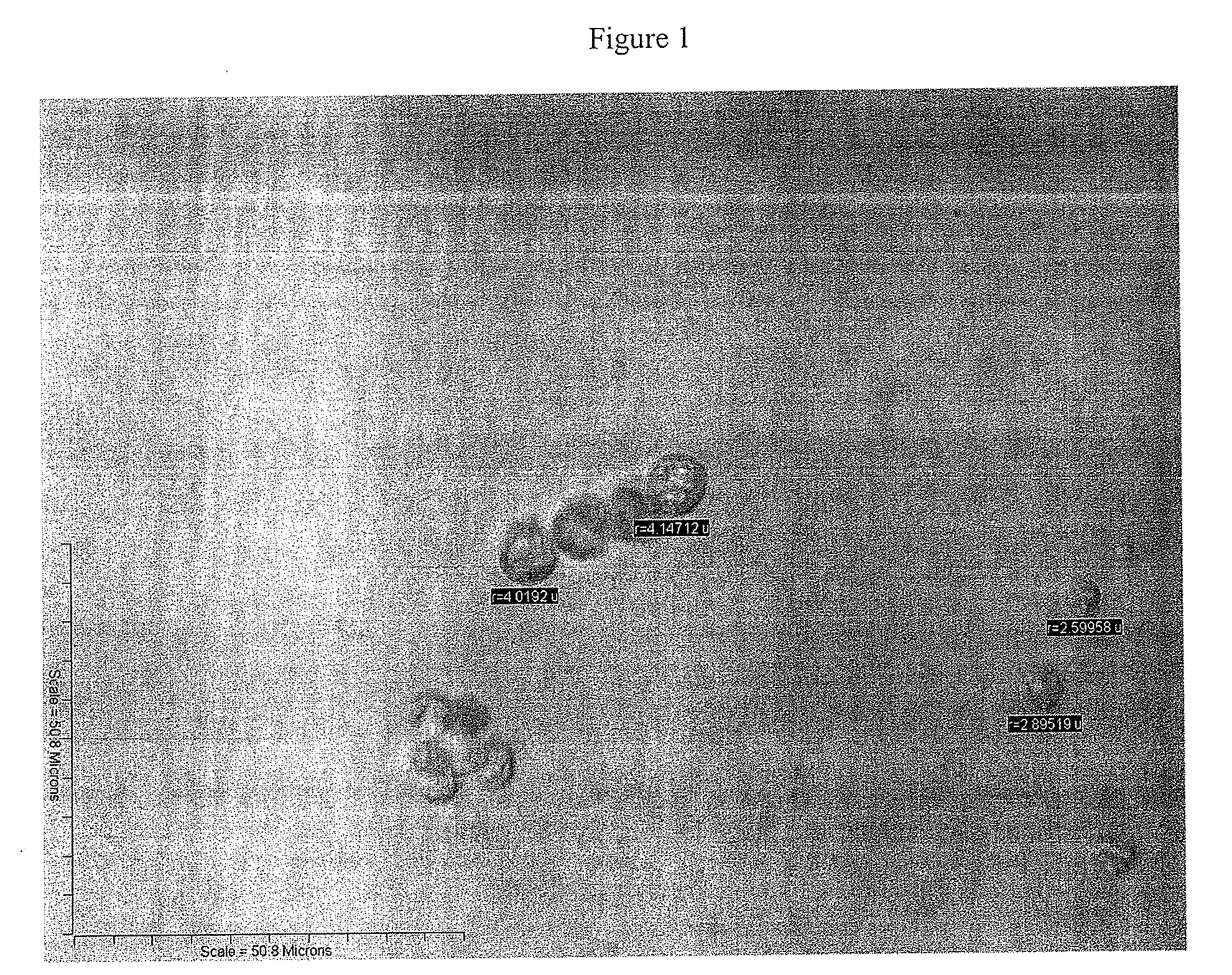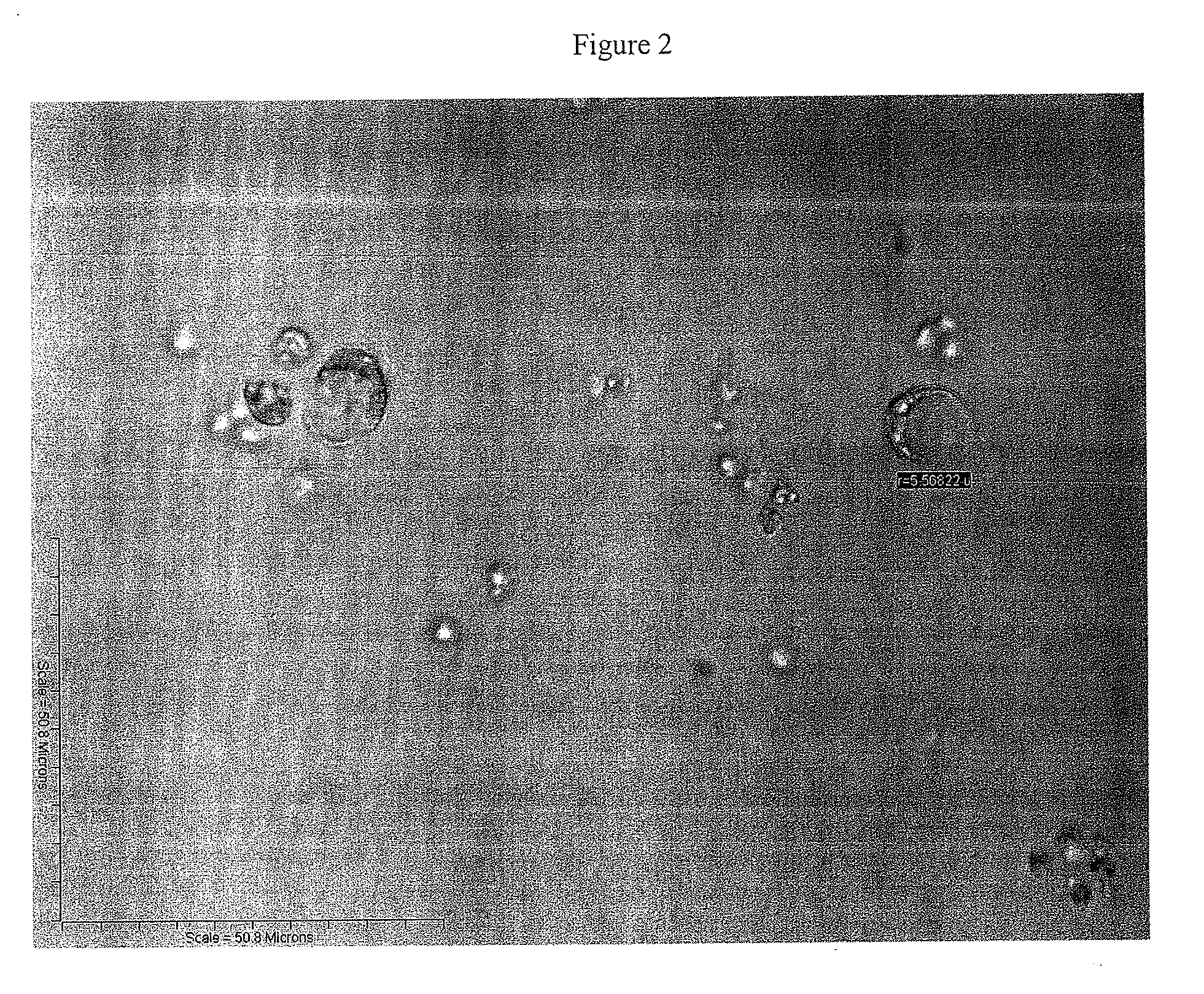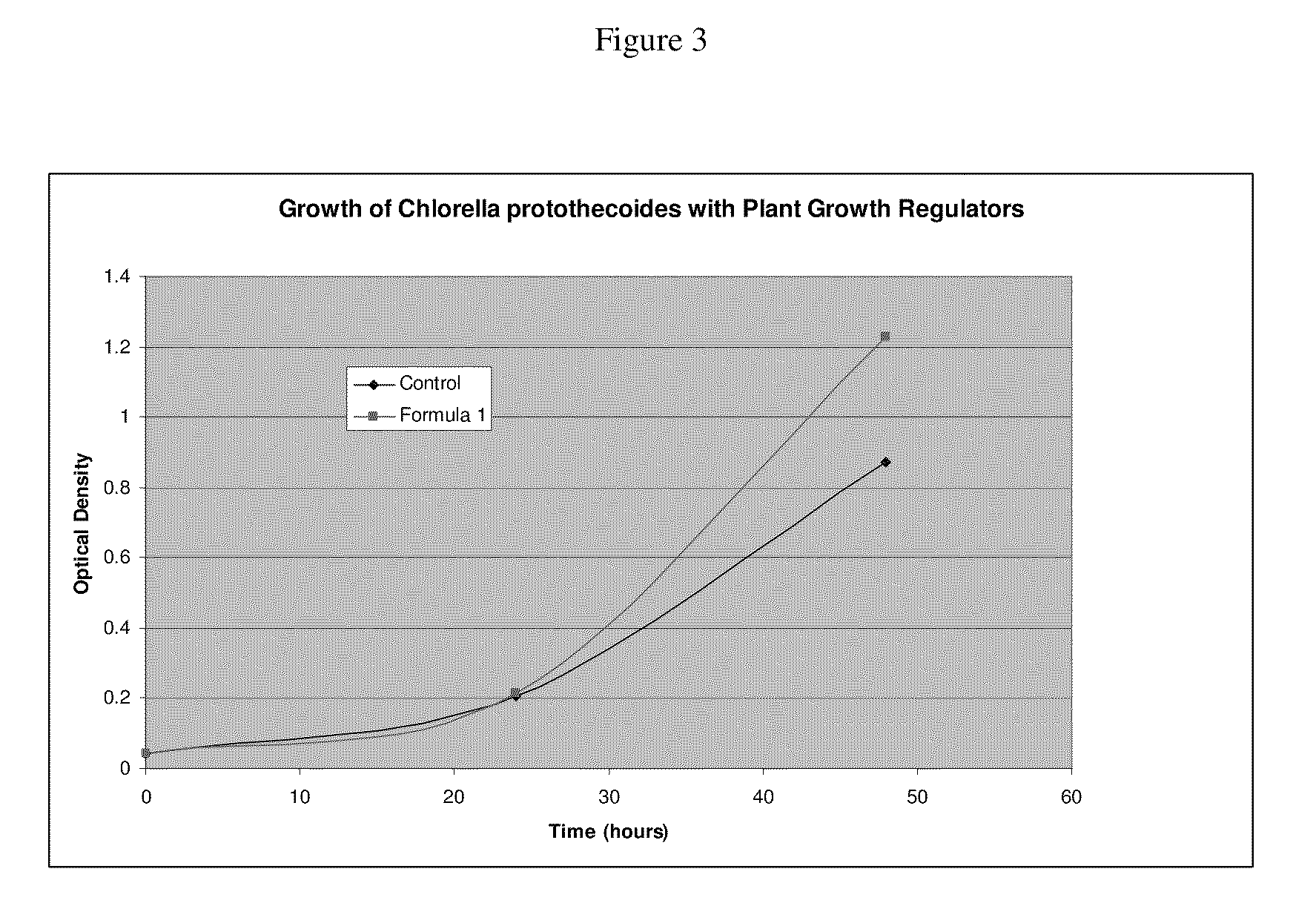Use of plant growth regulators to enhance algae growth for the production of added value products
a technology of plant growth regulator and added value product, which is applied in the field of plant growth regulator to enhance algae growth for the production of added value products, can solve the problems of inability to directly use humans, inability to compete with agriculture, and difficulty in actually achieving this potential
- Summary
- Abstract
- Description
- Claims
- Application Information
AI Technical Summary
Benefits of technology
Problems solved by technology
Method used
Image
Examples
example 1
[0127]Chlorella vulgaris was cultured in Bristol's medium (see Nichols, Growth Media—freshwater. In: Psychological Methods. Ed. J. R. Stern. Cambridge University Press, Pp 7-24, 1973, incorporated by reference; also see below in Table 1), amended with 0.1% yeast extract (DIFCO, MI—Bacto Yeast Extract, product number 212750) and 0.5% glucose (control cells). A second group was cultured in the same medium with a 10% addition of fulvic acid, which was extracted from leonardite (20-25% fulvic acid).
TABLE 1Autotrophic and Heterotrophic Bristol's Media (mg / L)ChemicalAutotrophicHeterotrophicNaNO3250250CaCl2•2H2O2525MgSO4•7H2O7575K2HPO47575KH2PO4175175NaCl2525EDTA5050KOH3131Fe2SO4•7H2O4.984.98H2SO40.001 mL / L0.001 mL / LH3BO311.4211.42ZnSO4•7H2O8.828.82MnCl2•4H2O1.441.44MoO30.710.71CuSO4•5H2O1.571.57Co(NO3)2•6H2O0.490.49Yeast Extract—1000C6H12O6—5000
[0128]Stock Solutions can be made for easy addition of the chemicals to the media.
[0129]To prepare the fulvic acid, about 25 g of powdered leonard...
example 2
[0132]Auxenochlorella protothecoides was grown in Bristol's medium (see above) amended with 0.1% yeast extract (see above) and 0.5% glucose (control cells). Two other groups were cultured in the same medium with either indole acetic acid (2 mg / L, Cat. No. 12886, Sigma-Aldrich Canada Ltd.) or gibberellic acid (2 mg / L, Cat. No. G7645, Sigma-Aldrich Canada Ltd.) added. Dry weights were determined and compared between the culture groups after seven days.
[0133]Those treated with indole acetic acid increased dry cell mass by 50% relative to the control. Those treated with gibberellic acid increased dry cell mass by 20%. Further, those cells treated with indole acetic acid increased oil production by 15%.
example 3
Comparison of the Growth of Chlorella protothecoides with or without Certain Combination of Growth Factors
[0134]The stock formula used was 0.25 g kinetin, 0.25 g 6-BA, 0.5 g NAA, 0.5 g GA3, 1.0 g Vitamin B1, 1.0 L dH2O. 19.5 mL were added to 250 mL of HGM (see table below) to create formula 2. Flasks were inoculated with Chlorella protothecoides to give a starting optical density of 0.04 absorbance units. The flasks were placed on a shaker at 125 rpm under heterotrophic (dark) conditions. Temperature was maintained at about 23° C. Optical densities were measured daily. Results are summarized in FIG. 3.
TABLE 2Heterotrophic Growth Medium (HGM)StockSolutionStockAmountConc.FinalSolutionComponent(L−1)(400 mL−1)Concentration1NaNO330ml10 g 8.82 mM2CaCl2•(2H2O)30ml1 g0.17 mM3MgSO4•(7H2O)30ml3 g0.30 mM4K2HPO430ml3 g0.43 mM5KH2PO430ml7 g1.29 mM6NaCl30ml1 g0.43 mM7Trace Metal (sol)18mlSee note 18Yeast Extract (Bacto)4gNA0.4%9C6H12O620gNA2.0%Note 1:NaEDTA•2H2O, 075 g / L; FeCl3•6H2O, 0.097 g / L; M...
PUM
| Property | Measurement | Unit |
|---|---|---|
| population doubling time | aaaaa | aaaaa |
| weight ratio | aaaaa | aaaaa |
| temperature | aaaaa | aaaaa |
Abstract
Description
Claims
Application Information
 Login to View More
Login to View More - R&D
- Intellectual Property
- Life Sciences
- Materials
- Tech Scout
- Unparalleled Data Quality
- Higher Quality Content
- 60% Fewer Hallucinations
Browse by: Latest US Patents, China's latest patents, Technical Efficacy Thesaurus, Application Domain, Technology Topic, Popular Technical Reports.
© 2025 PatSnap. All rights reserved.Legal|Privacy policy|Modern Slavery Act Transparency Statement|Sitemap|About US| Contact US: help@patsnap.com



